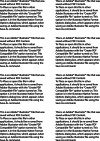The role of microglia membrane potential in chemotaxis
- PMID: 33423699
- PMCID: PMC7798195
- DOI: 10.1186/s12974-020-02048-0
The role of microglia membrane potential in chemotaxis
Erratum in
-
Correction to: The role of microglia membrane potentialin chemotaxis.J Neuroinflammation. 2021 Jan 28;18(1):33. doi: 10.1186/s12974-021-02093-3. J Neuroinflammation. 2021. PMID: 33509196 Free PMC article. No abstract available.
Abstract
Microglia react to danger signals by rapid and targeted extension of cellular processes towards the source of the signal. This positive chemotactic response is accompanied by a hyperpolarization of the microglia membrane. Here, we show that optogenetic depolarization of microglia has little effect on baseline motility, but significantly slows down the chemotactic response. Reducing the extracellular Ca2+ concentration mimics the effect of optogenetic depolarization. As the membrane potential sets the driving force for Ca2+ entry, hyperpolarization is an integral part of rapid stimulus-response coupling in microglia. Compared to typical excitable cells such as neurons, the sign of the activating response is inverted in microglia, leading to inhibition by depolarizing channelrhodopsins.
Keywords: Calcium signaling; Channelrhodopsin; Chemotaxis; Hippocampus; Laser damage; Microglia; Optogenetics; Sterile inflammation; Two-photon microscopy.
Conflict of interest statement
The authors declare that they have no competing interests.
Figures



Similar articles
-
ATP-induced chemotaxis of microglial processes requires P2Y receptor-activated initiation of outward potassium currents.Glia. 2007 Jun;55(8):810-21. doi: 10.1002/glia.20500. Glia. 2007. PMID: 17357150
-
Optogenetic activation of spinal microglia triggers chronic pain in mice.PLoS Biol. 2021 Mar 19;19(3):e3001154. doi: 10.1371/journal.pbio.3001154. eCollection 2021 Mar. PLoS Biol. 2021. PMID: 33739978 Free PMC article.
-
Two-photon imaging of spatially extended neuronal network dynamics with high temporal resolution.J Neurosci Methods. 2008 Jul 30;172(2):178-84. doi: 10.1016/j.jneumeth.2008.04.024. Epub 2008 May 3. J Neurosci Methods. 2008. PMID: 18539336 Free PMC article.
-
Combining Membrane Potential Imaging with Other Optical Techniques.Adv Exp Med Biol. 2015;859:103-25. doi: 10.1007/978-3-319-17641-3_4. Adv Exp Med Biol. 2015. PMID: 26238050 Free PMC article. Review.
-
Sperm chemotaxis and regulation of flagellar movement by Ca2+.Mol Hum Reprod. 2011 Aug;17(8):457-65. doi: 10.1093/molehr/gar041. Epub 2011 May 24. Mol Hum Reprod. 2011. PMID: 21610215 Review.
Cited by
-
Calcium Signalling in Microglia.Adv Neurobiol. 2024;37:123-133. doi: 10.1007/978-3-031-55529-9_7. Adv Neurobiol. 2024. PMID: 39207689 Review.
-
Neuron-glia interaction at the receptor level affects olfactory perception in adult Drosophila.iScience. 2022 Dec 19;26(1):105837. doi: 10.1016/j.isci.2022.105837. eCollection 2023 Jan 20. iScience. 2022. PMID: 36624835 Free PMC article.
-
Microglial voltage-gated proton channel Hv1 in spinal cord injury.Neural Regen Res. 2022 Jun;17(6):1183-1189. doi: 10.4103/1673-5374.327325. Neural Regen Res. 2022. PMID: 34782552 Free PMC article. Review.
-
Retinal and Brain Microglia in Multiple Sclerosis and Neurodegeneration.Cells. 2021 Jun 15;10(6):1507. doi: 10.3390/cells10061507. Cells. 2021. PMID: 34203793 Free PMC article. Review.
-
Interfacing with the Brain: How Nanotechnology Can Contribute.ACS Nano. 2025 Mar 25;19(11):10630-10717. doi: 10.1021/acsnano.4c10525. Epub 2025 Mar 10. ACS Nano. 2025. PMID: 40063703 Free PMC article. Review.
References
MeSH terms
Grants and funding
LinkOut - more resources
Full Text Sources
Other Literature Sources
Molecular Biology Databases
Research Materials
Miscellaneous

